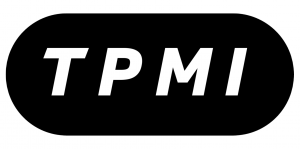ORLANDO, FL, USA, January 4, 2024 /EINPresswire.com/ — The Army recently released ADP 3—13 Information forward states:
“Information is central to everything we do—it is the basis of intelligence, a fundamental element of command and control, and the foundation for communicating thoughts, opinions, and ideas. As a dynamic of combat power, Army forces fight for, defend, and fight with information to create and exploit information advantages—the use, protection, and exploitation of information to achieve objectives more effectively than enemies and adversaries do.”
Tipping Point Military Innovation (TPMI) offers an innovative way to visualize the Army Applications Laboratory (AAL) Terrain Shaping project. During combat there will be vast amounts of data available: One World Terrain (OWT) data; and, thousands of intel reports comprising own and foreign service data. A key challenge is the assembly of all of this data to effectively turn it into actionable, combat effective plans. TPMI can provide a major step forward in this endeavor as articulated in the response to the AAL RFI on Terrain Shaping.
TPMI offered the delivery of a 3D virtual sand table to the AAL Program Manager for Terrain Shaping. The AAL website lists 5 key thrusts they are trying to solve. The AAL places emphasis on “human-in-the-loop to approve lethal action.” A ‘human-in-the-loop’ must the various alternatives and their relative effectiveness.
The AAL citied 5 thrusts (shown below) which were of interest. Below are several key questions tied to AAL’s 5 thrusts. TPMI’s 3D virtual sand table would significantly the AAL by providing answers to each of the questions.
• For AAL’s thrust “Uncrewed systems capable of forming obstacles to shape existing terrain”:
o How does soil and rock type, moisture content and type of vegetation affect the degree of terrain shaping?
o Given that terrain has been re-shaped, how does this affect enemy maneuver?
• For AAL’s thrust “Uncrewed systems that can position multiple explosive loitering munitions”:
o How do enemy air defenses affect unmanned systems?
o What flight paths and flight altitudes offer the best probability of arrival?
• For AAL’s thrust “Uncrewed systems that can position themselves in the deep battlespace and activate when a threat is identified”:
o What terrain types inhibit ground movement by unmanned systems?
o What route should the uncrewed systems take to avoid detection by the enemy?
• For: AAL’s thrust “Lethal or non-lethal effectors initiated from behind the front line to impact enemy maneuver in the deep fight”:
o How does closure of some portion of the road network affect enemy maneuver options?
o How does terrain slope and vegetation affect bypass of obstacles?
• For AAL’s thrust “Integration of remote sensing and lethal effectors at machine speed with human-in-the-loop to approve lethal action”:
o Should not this be considered in a ‘systems’ context?
o Which of the above possible effectors would be most combat effective?
In addition to AAL’s thrusts, other system attributes that must be considered include:
• For canon delivered effectors:
o How does the range from the canon to desired impact area affect circular error probable (CEP)?
o How does height of burst affect the radius of effectors with multiple sub-effectors?
• For air delivered systems:
o What are range payload aspects and number of sorties requires in order to establish a combat effective system?
o What are enemy air defense considerations?
These above questions that TPMI has provided are rhetorical. e.g., “How does closure of some portion of the road network affect enemy maneuver options?” Obviously, closure of a portion of the road network would affect enemy maneuver. TPMI’s 3D Virtual sand table would obviously be beneficial to the Army because the road network would be optimally visualized in 3D by Army personnel.
TPMI believes it brings the following to the party:
• TPMI would enable visualization of all the information that is available collectively in one place through use of a virtual 3D sand table presented on the Integrated Visual Augmentation Systems (IVAS) display. This is critical to developing a combat effectiveness for Terrain Shaping. The TPMI 3D virtual sand table would include:
o Encompassing OWT terrain from the forward line of troops (FLOT) to the deep maneuver area;
o Depicting terrain elevation in 3D along with vegetation by types and heights;
o Showing villages, structures, etc. in 3D;
o Including the road network and surface types;
o Providing the river/ stream network along with bridges and riverbanks in 3D;
o Plotting the latest enemy data including types of equipment and range fans;
o Integration of Dr. Robert Douglas’s patented 3D Livestream technology (http://opic3d.com which did its first public release on 31 December 2023) into the 3D virtual sand table;
o Performing intervisibility analyses.
• Being able to actually manipulate the terrain, change its shape, and see in 3D the effects of:
o Change of terrain slopes;
o Insert barriers and mines;
o Creating deep holes with earth penetrating effectors.
• Bringing all this together so that all key people can simultaneously together:
o Planners can create options;
o Approval authorities can rapidly understand the situation and select the course of action;
o Those charged with execution of the plan can visualize their role in the big picture.
Key benefits to AAL:
• TPMI further believes that a virtual 3D sand table would enhance many of the AAL innovative thrusts including improving survivability for aircraft arming and refuel points.
• Integrating 3D livestream video of the 3D sand table (via TPMI’s brother company OPIC Technologies, Inc.)
About the author: Dr. Robert Douglas is a senior defense analyst who has served key positions including Director of Systems Analysis and VP of Engineering at America’s largest defense contractors. He is relentlessly pursuing efforts to work with the US Army to improve US Army capabilities. TPMI is absolutely committed to helping the US Army in any way possible. TPMI aims to work with the Futures Command’s Army Applications Laboratory (AAL) to help the US Army overcome challenges it faces.
As an aside, Dr. Robert Douglas, who is one of America’s most prolific inventors with nearly 100 patents granted, recently released OPIC Technologies’s 3D livestream technology. OPIC is a revolutionary 3D communication platform enabling live 3D conversations from anywhere in the world. Sign up for free at https://love.opic3d.com/signup
Dr. Robert Douglas
TPMI
email us here
Visit us on social media:
Twitter
LinkedIn
Other
TPMI’s 3D virtual sand table!
![]()
Originally published at https://www.einpresswire.com/article/679045697/tipping-point-military-innovation-offers-a-way-for-army-applications-laboratory-to-visualize-vast-amounts-of-data




